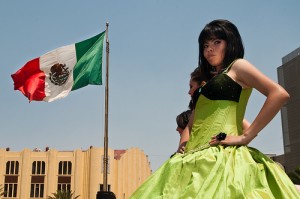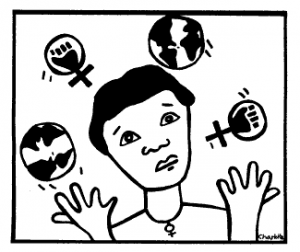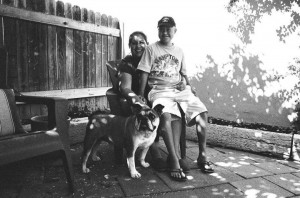Real Women Have Curves is a very uplifting video. As a dark complexed woman, I have had my share of insecurities. My siblings, not very light brown themselves, would mock me about my color. They would call me burnt charcoal, brownie and darkie. I felt different. I felt as if I was not part of them; like an addition. Not having my father around or knowing who he was solidified my belief that I was a half sibling. Even a couple of my mother’s brothers said I was different a few times. That only made we wonder more. I disliked my skin color, which was similar to my grandfather’s, who was tall, dark and had lovely green eyes that I wished I would have inherited.
My grandfather’s grandfather was an Afro-Mexican, also tall, fair skinned with blue eyes. I would give so much to meet that man. When I was told about this story, I had an awakening. For many years I felt disconnected from my family and that one story united me to them. From all my cousins in Mexico, I seem to be the darkest, even though we all come in different shades. My cousin in Tijuana could pass for Anglo if she would die her hair blonde, this is how much we vary. Having information of oneself changes our perspective, as did the story of my great great grandfather.
Real Woman Have Curves is a great film because it relays the message of acceptance of who one is. Anna did not connect sex to her complete self, that was only part of who she was as a woman. By knowing that, she was able to look beyond her prescribed role by society as a Mexican woman. Having information about my history gave me confidence, because now I know where I got certain features from and with this confidence, I realize that I have more to offer than just a interesting look.
To accept one self as is, is the best coming of age experience. We learn to love ourselves as who we are. Not being a size zero, blond or blue eyed does not make me any less. Being brown does not make me less valuable either. Real Women Have Curves sends out a message to all women to accept themselves. Once I accepted the dark complexion I have, I liberated my self from the critiques and unhappiness I experienced because I was seen as lesser than. I found a freedom.





